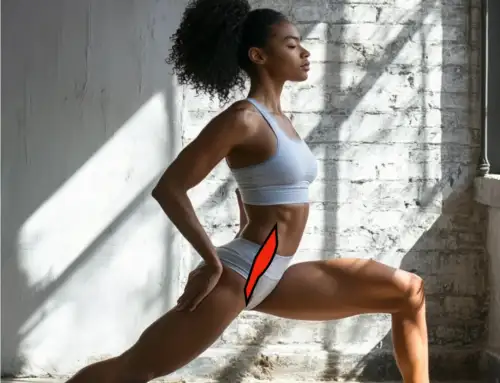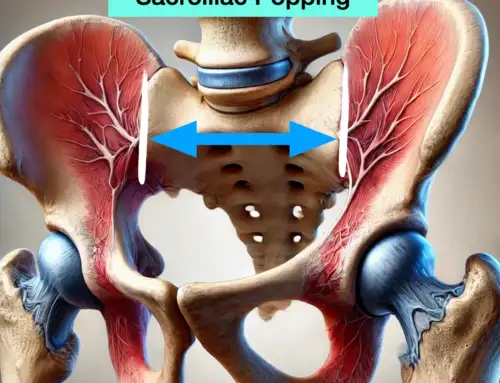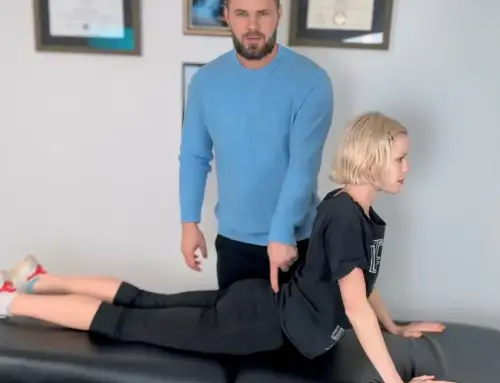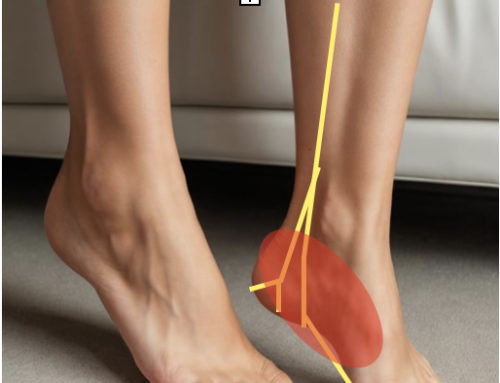Outer Ankle Pain: Causes and Peroneal Tendonitis Exercises 2024
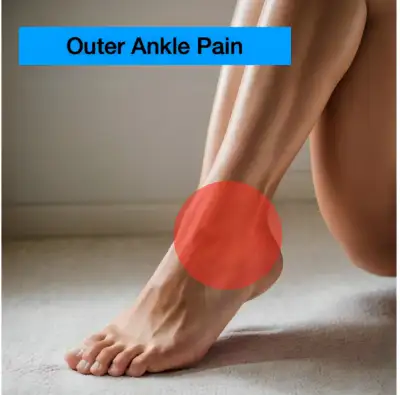
Pain in the peroneal tendon and lateral ankle can be caused by overuse, improper footwear, or underlying conditions. Rest, ice, compression, and elevation can help alleviate symptoms. Consult a healthcare professional for proper diagnosis and treatment to prevent further injury.
This article will cover some of the most common causes of ankle joint pain and provide some of the most up-to-date exercises and stretches for peroneal tendonitis.
Common Causes of Ankle Injuries
Acute Causes
Sprained Ankle: The most frequent cause of lateral ankle injuries is a sprained ankle, involving sudden pain and swelling due to the stretching or tearing of ligaments. Repeated sprains can lead to ankle instability
- Sudden inward twisting motion of the ankle that injuries the outer ligaments of the ankle
Chronic Conditions
Peroneal Tendonitis (Tendinopathy): This condition involves inflammation of the peroneal tendons behind the lateral malleolus, leading to pain and swelling on the outer ankle.
- Distinguishing characteristics include that pain is worse with exercise and relieves during rest.
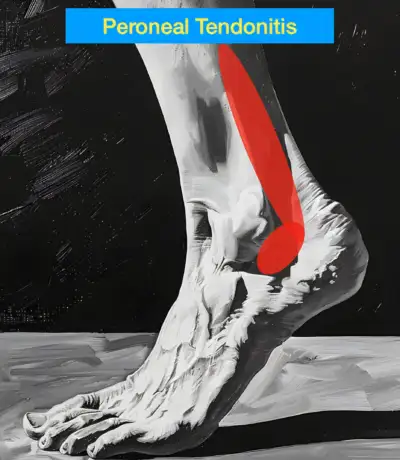
Sinus Tarsi Syndrome– Small canal on the lateral ankle that can become injured after an ankle sprain. Pain can be significant due to the nerve endings that carry pain and proprioceptive signals.
- Pain is felt when the ankle is turned inwards or pressed into the sinus tarsi.
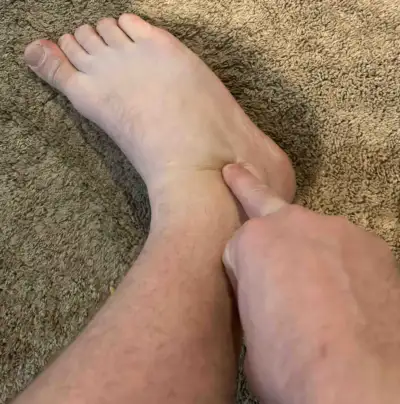
Ankle Impingement– This occurs when the soft tissue on the front of the ankle get pinched between the joint as the tibial and fibular connection to the ankle.
- Pain is created as the ankle flexes upwards and can create pain near the peroneal tendon.
- Achilles Tendonitis can develop from anterior ankle impingement due to increased strain from lack of ankle upward flexion (dorsiflexion)
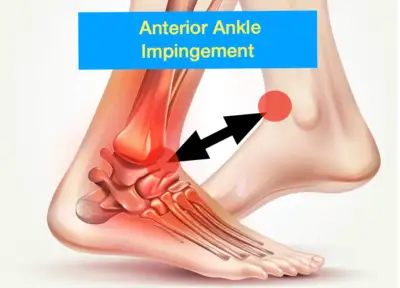
Dislocation of the Peroneal Tendon: The peroneus longus tendon travels behind the outer ankle bone (malleolus) and rubs on the bone. It is primarily caused by injury to the superior peroneal retinaculum (which holds the tendon down).
- Make a clicking noise that can be accompanied by gradual pain and ankle swelling around the lateral malleolus (bony bump).
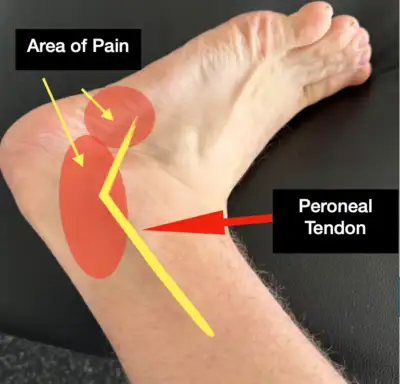
Recovery and Rehabilitation Tips for Peroneal Tendonitis
After any ankle ligament injury, a rehabilitation program should include strength training exercises, proprioception drills, and specific stretches.
Strengthening the Peroneal longus and Brevis
- Leg straight with the leg, the ankle starting inwards (inversion) and moving outwards (eversion). There should be no motion in any other joints.
This exercise is commonly performed improperly because other joints and muscles are recruited to perform the movement. It is best to start with a partner to ensure the motion only occurs at the ankle joint.
Once proper technique is achieved, bands and weights can be added for progression.

Proprioception Drill for Anterior Talofibular Ligament– Most common ankle ligament injury
- Single leg standing on the injured ankle with the leg straight
- Slightly rotate the lower leg while the base of the big toe maintains contact with the ground.
- Lift Toes and slightly lean trunk backward to load the ligament
- Practice this until the balancing is easy and progress to eyes closed
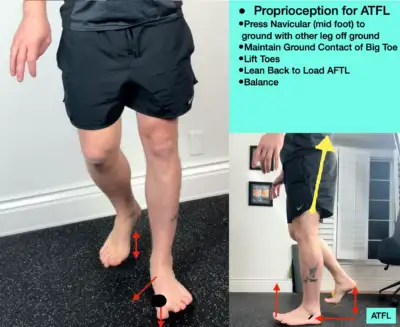
Stretching the Lateral head of Gastrocnemius
- If the goal is to stretch the right outer calf muscle, place the left hand on the wall with a bent knee.
- The right leg is straight, with the leg slightly rotating away from the midline to put more weight on the outer portion of the heel. This stretch will target the outer portion of the calf muscle.
- Lift the right arm to increase the intensity of the stretch hold for 45 seconds, and relax. Perform this for 5-8 repetitions.
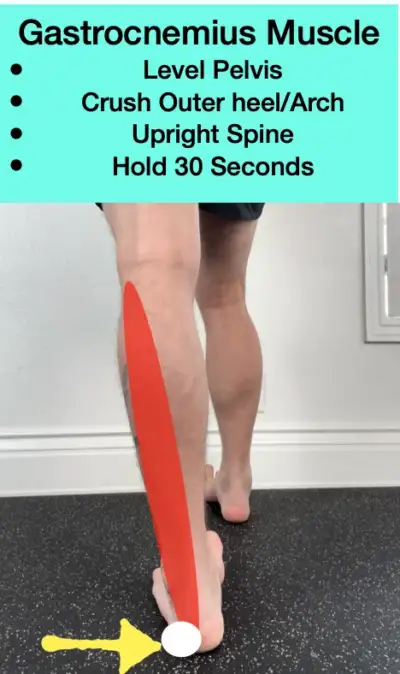
Treatment Options for Ankle Injuries
Consulting with a healthcare provider is crucial for comprehensive treatment and a personalized approach. They can offer guidance tailored to the specific cause of your ankle pain, ensuring a path toward relief and recovery.
Conservative Treatments- Traditional
Rest and Elevation
For ankle injuries, start with the RICE method: Rest, Ice, Compression, and Elevation. This approach swiftly reduces swelling and protects against further harm.
Ice Therapy
Ice applied to the outer ankle for 20 minutes multiple times a day can relieve pain and decrease swelling, particularly within the first 48 to 72 hours of experiencing discomfort.
Compression
Wrap your ankle with an elastic bandage or support to compress and reduce swelling while also stabilizing the joint for faster healing.
Medications
Manage pain and reduce inflammation with over-the-counter NSAIDs. For targeted relief, consider steroid injections to combat inflammation.
Advanced Treatments
Bracing and Orthotic Devices
Some people find relief by wearing an ankle brace or using custom orthotics. These aids provide extra support and help distribute pressure, making movement more comfortable.
Surgical Options
In severe cases or when conservative treatments don’t work, surgery may be an option. These interventions target damaged ligaments, tendons, or bones that cause ankle pain.
Prevention Strategies for Avoiding Ankle Tendon Injuries
Strengthen and Stabilize
Strengthening your ankle muscles is essential to preventing injuries. Incorporate exercises like heel raises, toe taps, and balance board workouts to improve balance and stability. These activities enhance proprioception, allowing you to better sense your body’s position in space and avoid sprains.
Warm-Up and Cool Down
Prevent ankle injuries with a thorough warm-up and cool-down. Start by gently stretching to loosen muscles and joints, then increase intensity before ending with focused ankle and foot stretches for improved flexibility and reduced muscle tension.
Avoid Overuse
Prevent ankle joint pain by treating your body with care. Rest is crucial for recovery after high-impact activities such as running or jumping. Swimming or cycling are low-impact, gentler alternatives on your ankles.
Address Biomechanical Issues
If you have flat feet, high arches, or other foot issues, seek advice from a healthcare expert for custom orthotic inserts. These personalized inserts fix structural problems, evenly distribute pressure, and protect your outer ankle from unnecessary strain.
Stay at a Healthy Weight
To avoid ankle pain, it’s essential to maintain a healthy weight. Excess weight strains your ankles and feet, increasing the chances of injuries. You can achieve and sustain a healthy weight by following a balanced diet and staying active.
Conclusion
This article is just an overview of the most common causes of Ankle Injuries and some particular rehabilitation exercises for peroneal tendonitis and ankle sprains. Complete rehabilitation requires a global approach addressing strength, mobility, and stability of the entire lower extremity and lumbar spine.
Reach out to Dr. Dean (sports doctor) in California by texting (best), calling 323-354-6077, or emailing at drjustindean@gmail.com
Our editorial practices include evidence-based practices, interventions, and recommendations.


